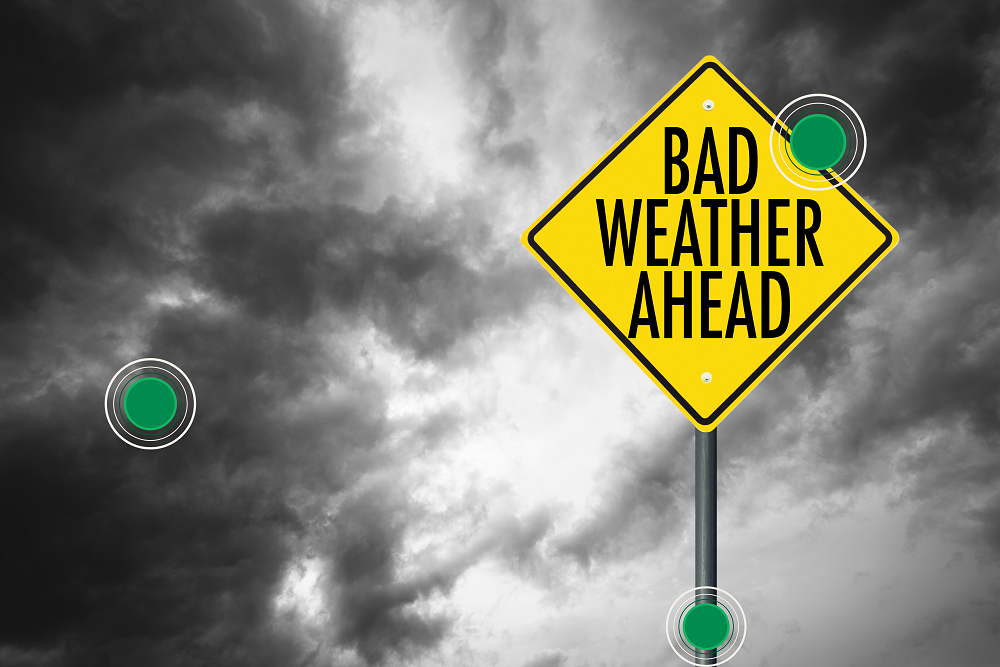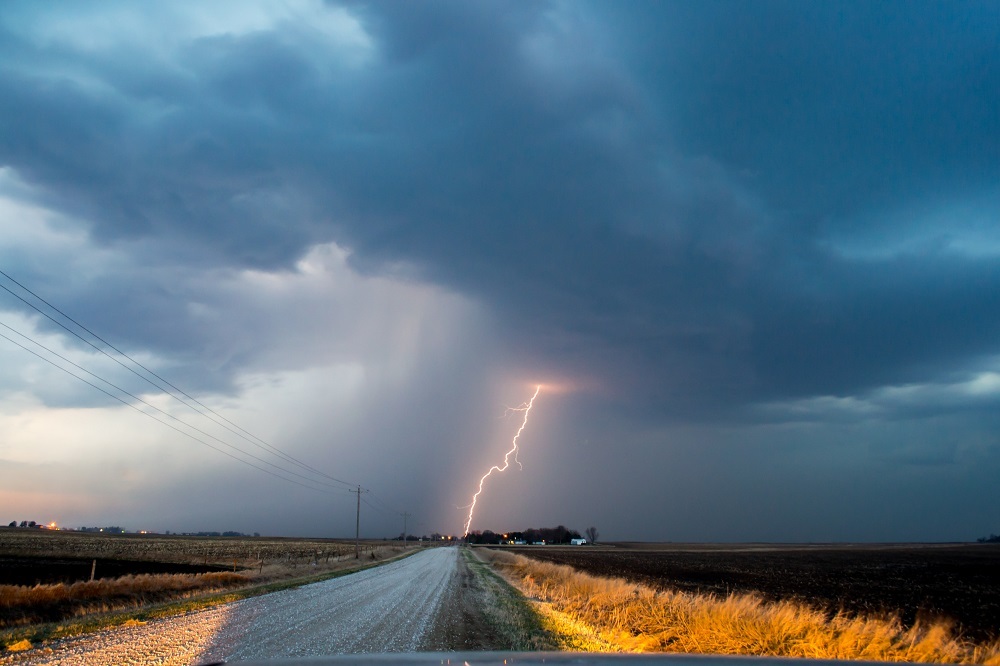
Weather-Related Driving Hazards: How to Stay Safe on the Road
Picture this: you're driving home from work, dodging potholes like a rugby player heading for the try line, when suddenly, the sky turns dark and starts pelting you with hailstones the size of golf balls. If you think dodging potholes is a challenge, just wait until you have to do it while driving through hazardous weather conditions! In this article, we're going to take a look at some of the weather-related driving hazards you might encounter on South Africa's roads and how to manage them safely. So buckle up and let's hope your car's suspension can handle the ride! If you suspect something might be wrong with your vehicle but you're not quite sure what, bring it in for a DEKRA Condition Report, which includes an inspection of your undercarriage and suspension.
Weather-related driving hazards you might face and how to manage the situation if you're caught in one:
Wet Roads
Driving on wet roads can be a real adventure. It's like driving through a car wash, except the soap is all over the road and you're never quite sure which way to turn your steering wheel. Wet roads can be slippery, making it harder to stop or stay in control of your vehicle. To help counter this road hazard, make sure your vehicle's tires have adequate tread depth and use your headlights and hazards to improve visibility. By taking these precautions, you can reduce the risk of accidents and stay safe when driving on wet roads or when it's raining.
The dangers of driving on a wet road include the following:
- Reduced visibility
- Reduced traction
- Shorter stopping distance
- Risk of aquaplaning
Safety Tip: Slow down. That's right, just slow down and take it easy. Give yourself plenty of time to react to any unexpected situations and make sure to leave plenty of space between you and the car in front of you. And remember, if you do start to aquaplane, don't panic. Ease off the accelerator and steer in the direction you want to go. Just try not to scream too loudly, it could scare any passengers you might have with you.

Photo credit: Arun Thomas on Pexels
Fog
Arrive Alive notes that, "dense fog can reduce visibility to less than 100 meters, making it extremely difficult for drivers to see other vehicles, pedestrians, or hazards on the road." It can feel like driving with your eyes closed and still expecting to stay in your land. When driving through fog, slow down, increase your following distance, use your wipers and defrosters, stay focused, and don't forget your fog lights.
The dangers of driving in fog include:
- Limited reaction time
- Collision
- Confused depth perception
- Increased stopping distance
- Decreased traction
- Reduced visibility
Safety Tip: Use your headlights. You'll increase your visibility and make it easier for other drivers to see you. Remember, if the fog is too thick, it's always better to pull over and wait for it to clear. After all, you can't navigate a cloud with just a GPS and your fingers crossed. Safety first.
Wind
Driving while it's windy outside can feel quite disorientating at times. You're never sure if you're being pushed or pulled, or if you're about to fly off the road like a kite! Strong gusts of wind can cause a car to veer off course, especially for lighter vehicles like motorcycles and small cars. When you find yourself in this kind of situation, it's important to keep a level head and do the following:
- Keep a firm grip on the steering wheel.
- Reduce your speed.
- Stay alert and watch out for obstacles, those that are pushed into the road and into the air.
- If possible, avoid high-sided or lightweight vehicles, as they are more susceptible to tipping over
The hazards of driving while it's windy:
- Vehicle instability
- Unexpected obstacles
- Crosswinds
- Flying debris
- Reduced fuel efficiency
- Tipping over
- Wind gusts
Safety tip: Steer into the wind. By steering into the wind, you'll reduce the risk of being pushed off the road. Remember to slow down and avoid sudden movements, and give yourself plenty of space between your vehicle and other vehicles or objects in your vicinity.

Photo credit: Gotta Be Worth It on Pexels
Read: Road Safety Tips: How to navigate South Africa's roads safely
Hail
Getting caught in a hailstorm while driving is the absolute worst! It's like being pelted by tiny ice missiles while you're trying to navigate the road. And let's not even talk about hail damage. If you've never been caught in a hail storm, count yourself lucky. The first thing to do when you find yourself faced with this weather-related driving hazard is to find shelter as quickly and safely as possible. If you can't, slow down, turn on your hazard lights, and stay alert for other drivers who may be struggling to see. Avoid sudden movements such as hard braking or steering, as these can cause you to lose control of your vehicle.
Possible dangers of driving when it's hailing:
- Poor road conditions
- Reduced traction
- Aquaplaning
- Reduced visibility
- Vehicle damage
- Other drivers
Safety Tip: Stay inside your car if you don't feel safe. Hail stones come in various sizes and some have been known to seriously injure people.
Lightning
When Mother Nature decides to put on a light show, it can be quite beautiful. But not when it's a lightning storm and you're caught in the middle of it. When you find yourself in a situation like this, the best thing to do is to pull over and wait it out. If that's not an option, try to stay in your car with the windows closed and avoid touching any metal objects, as lightning can be attracted to them. And remember, if you hear thunder, it means you're close enough to be struck by lightning, so stay inside and stay safe!
The dangers of driving through a lightning storm
- Electrical shock
- Reduced visibility
- Loss of control
- Fire
Safety Tip: If you feel unsafe and need to pull over, avoid parking under trees since they attract lightning. Try to find an open area away from trees and other tall objects.

Photo by NOAA on Unsplash
Extreme Heat
We've all experienced the absolute torture of getting into a car when it's been standing in 33 Degrees Celsius heat with no windows cracked. It's enough to make you consider trading your vehicle in for a bicycle! High temperatures can cause tires to blow out, engines to overheat, and drivers to become fatigued or dehydrated. Dehydration can cause dizziness and headaches. In extreme cases it can induce muscle cramps, nausea, confusion, and even loss of consciousness. All of these symptoms pose a threat to your safety as well as the safety of those who share the road with you. If you find yourself driving in extreme heat and start feeling unwell, pull over and take a break. It's better to arrive late than not at all.
The dangers of driving in extreme heat include:
- Dehydration
- Heat exhaustion
- Tire blowouts
- Overheating
- Reduced visibility
- Increased aggression/irritability
Safety Tip: Plan ahead. Our weather apps might not be 100% accurate, but they do give us a good indication of what we can expect temperature-wise for the week ahead. If you know you'll be spending time on the road during extreme heat conditions, be sure to stay hydrated, wear sunscreen, and park in a cool place once you've reached your destination.
Weather-related driving hazards can be challenging, but with the right precautions, you can reduce the risk of accidents and stay safe on the road. Always remember to slow down and take it easy on wet roads, use your headlights in foggy conditions, steer into the wind, find shelter when it's hailing, and pull over to wait out lightning storms. By staying alert, keeping a level head, and being prepared, you can navigate even the most hazardous weather conditions and arrive safely at your destination. Don't forget to get your vehicle checked out regularly to ensure it's in good condition for driving in all types of weather. Book a Condition Report with DEKRA today and receive an unbiased, comprehensive, digitalised, and image-rich report on the technical status of your vehicle. Click/tap here to find a DEKRA branch near you.